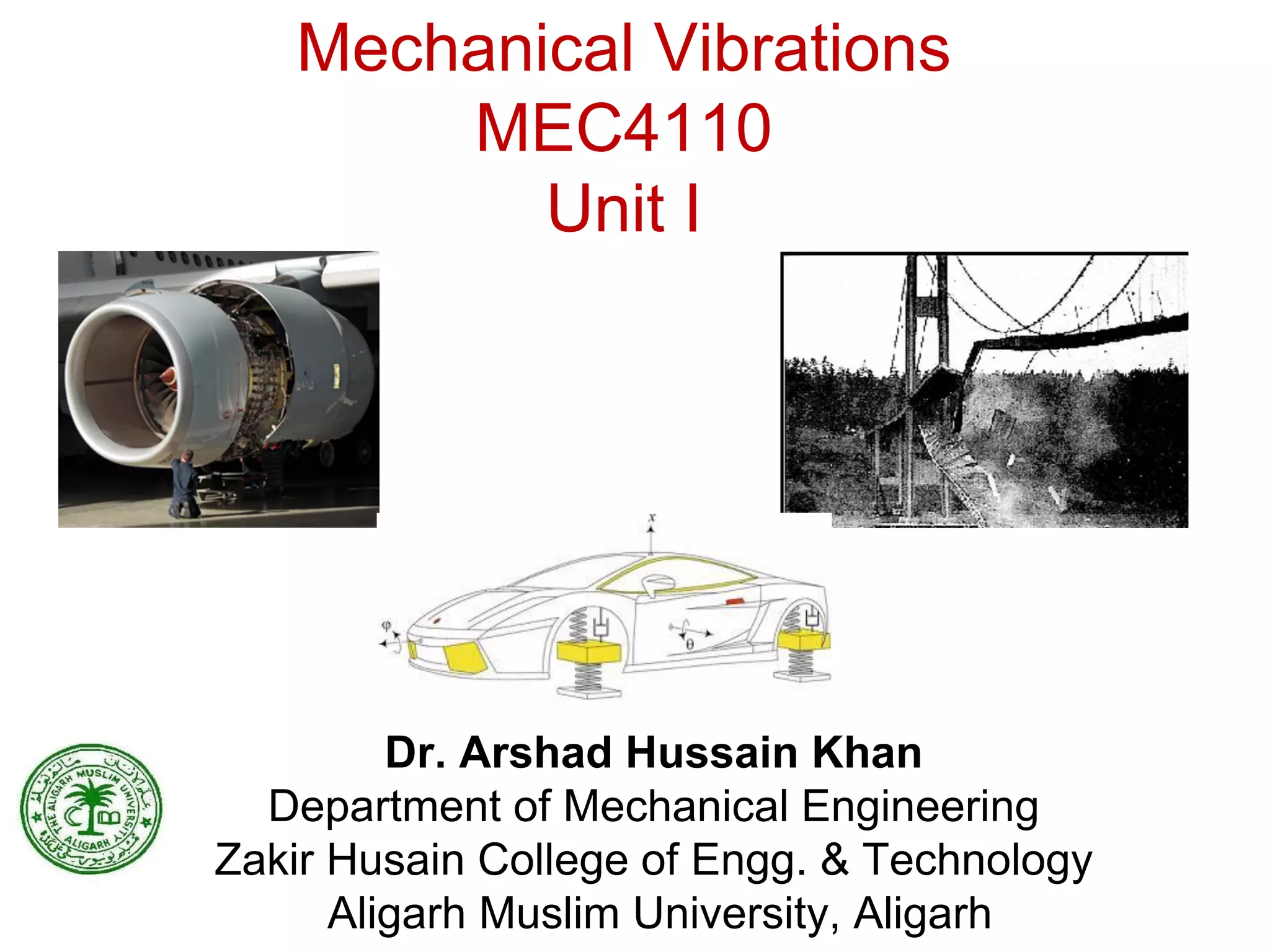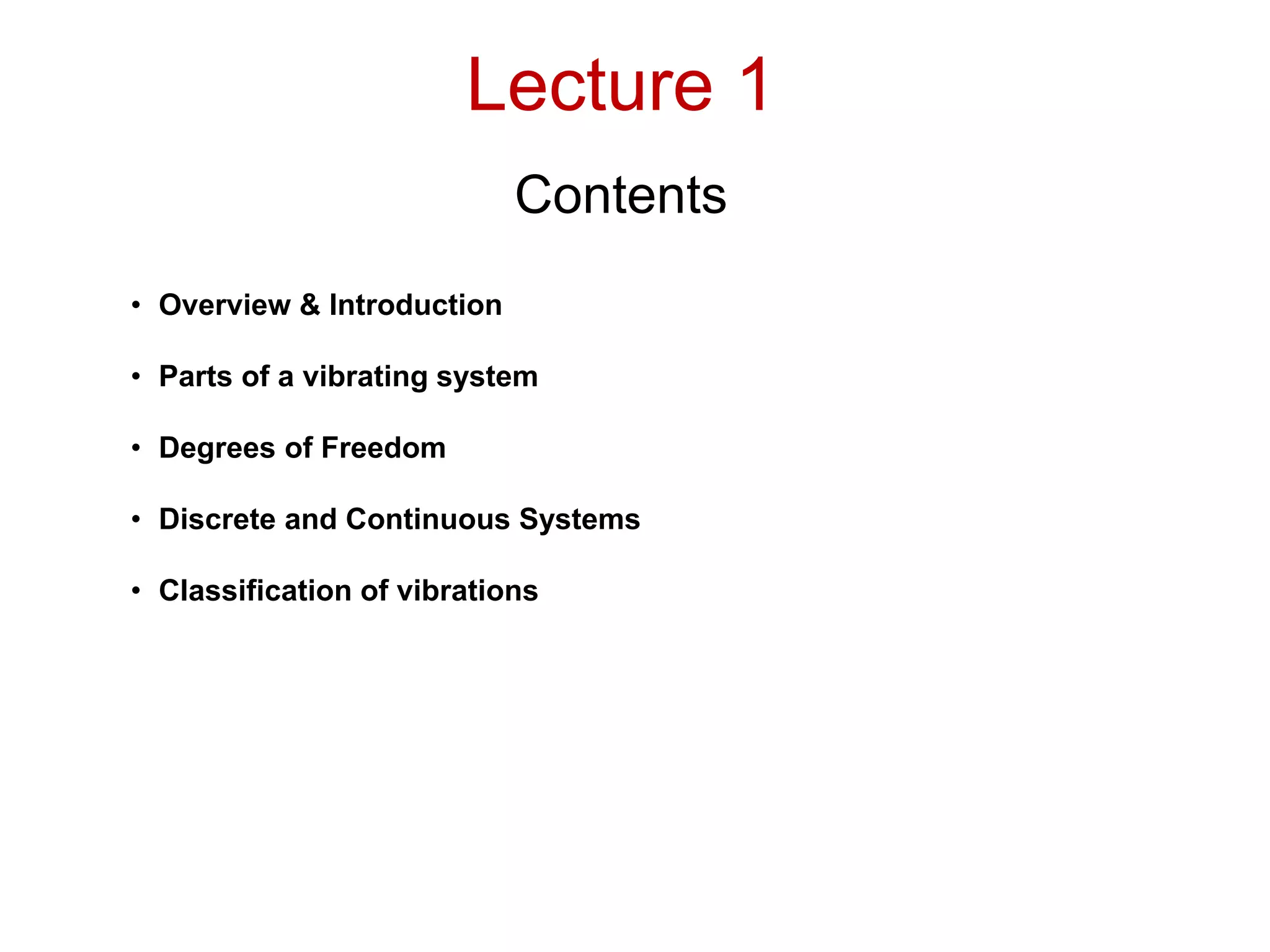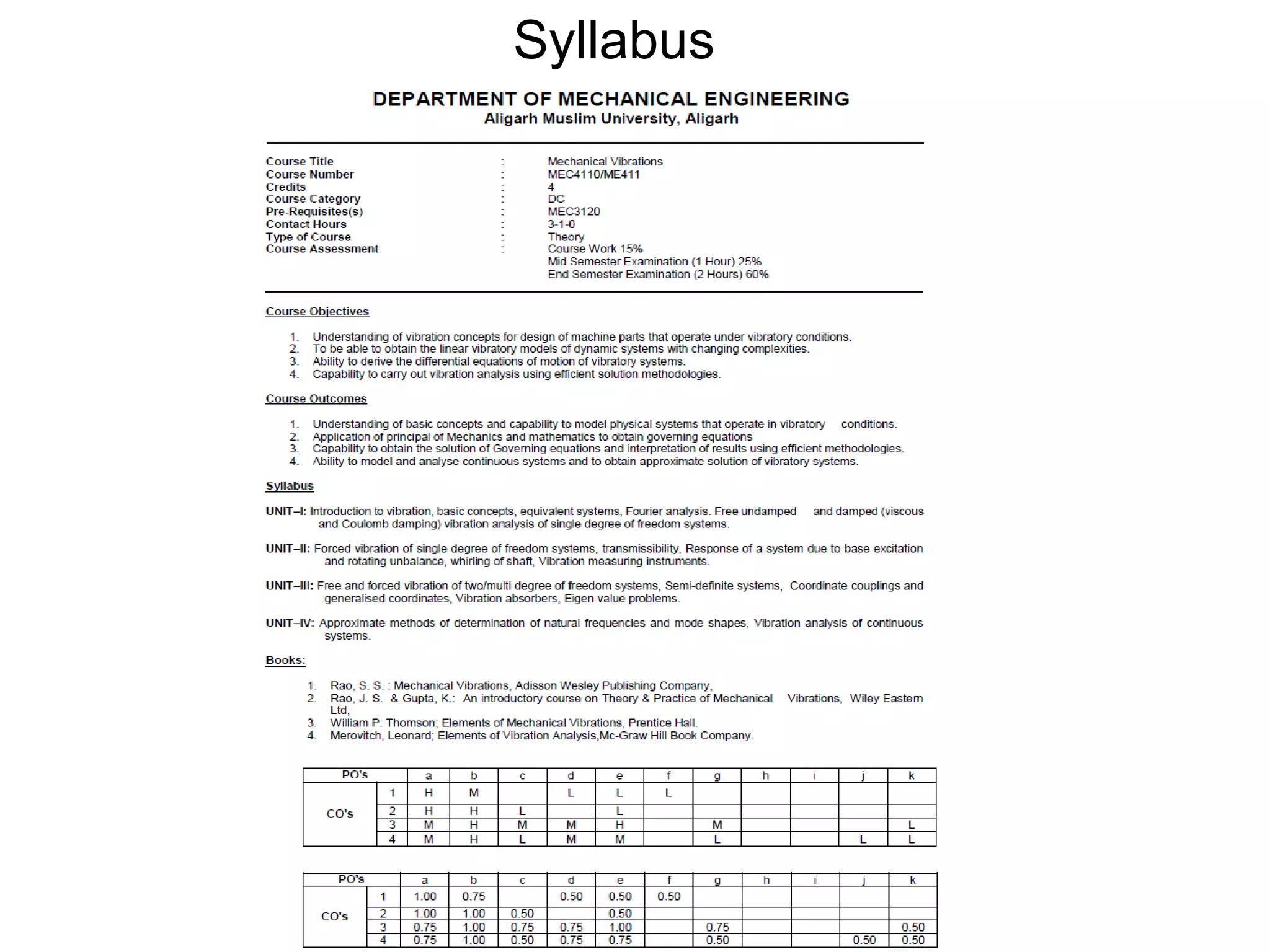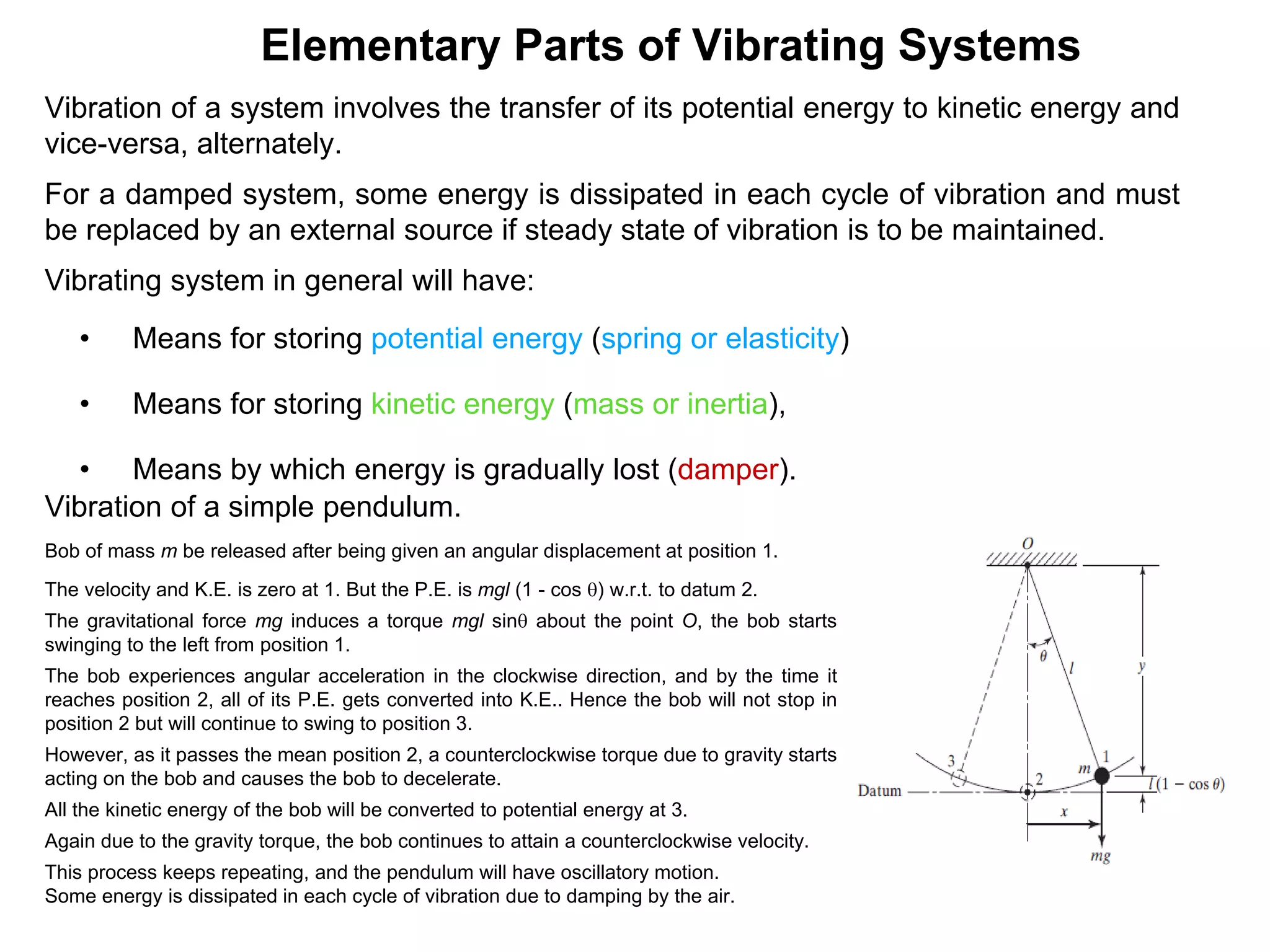The document provides an overview of mechanical vibrations, detailing definitions, types, and characteristics of vibrating systems. Key concepts include degrees of freedom, system classifications, energy conversion between potential and kinetic energy, and various types of vibrations such as free, forced, damped, undamped, linear, and nonlinear. It emphasizes the importance of vibration studies in engineering applications and potential effects on materials and machinery.







